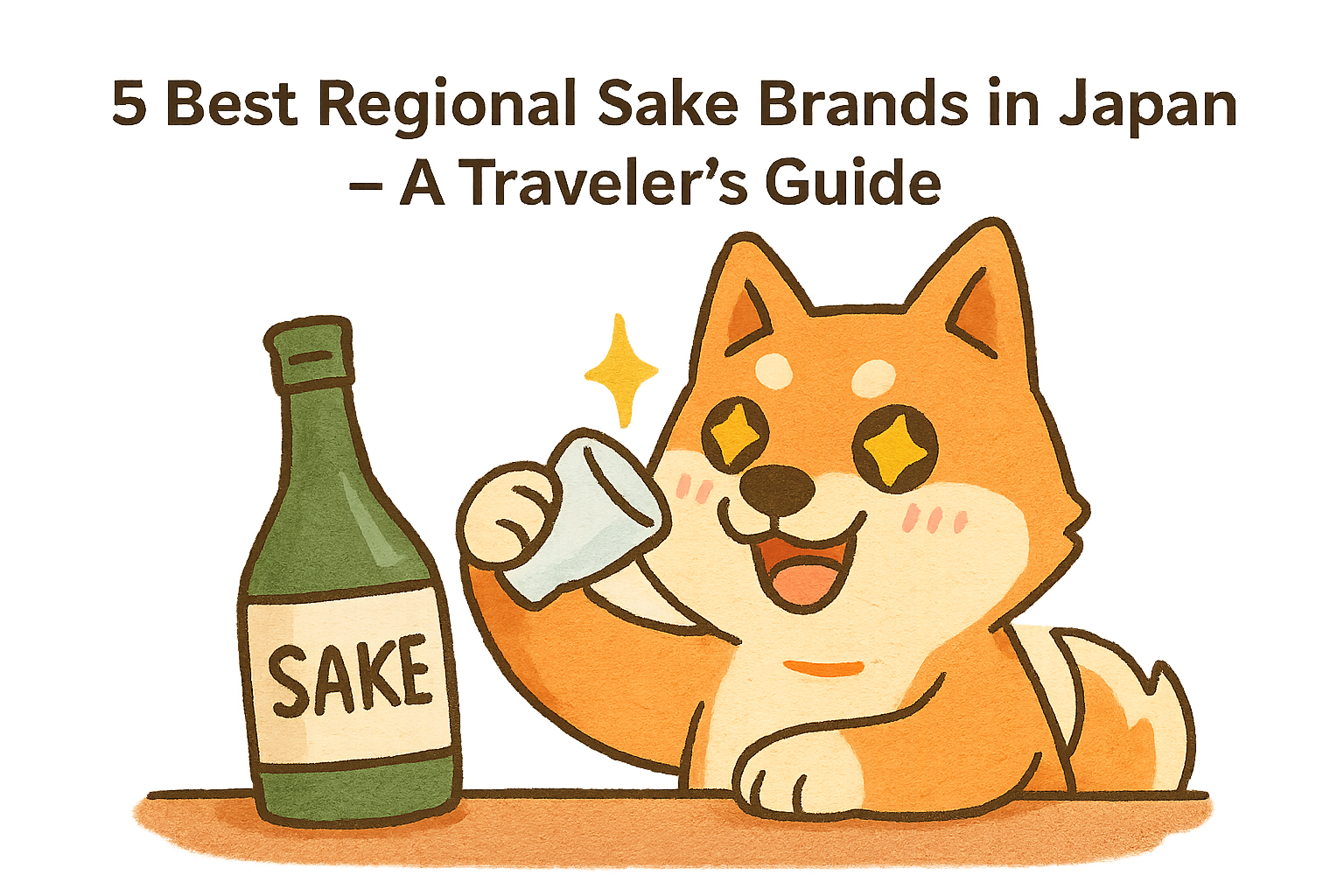- Introduction – Why the Best Regional Sake Brands Are a Must-Try in Japan
- What Makes Japanese Sake Unique?
- Types of Sake (Junmai, Ginjo, Daiginjo) for Beginners
- What Makes the Best Regional Sake Brands Special?
- 5 Best Regional Sake Brands in Japan
- How to Order and Enjoy Sake Like a Local
- Where to Experience Sake in Japan
- Conclusion – Explore Japan Through the Best Regional Sake Brands
Introduction – Why the Best Regional Sake Brands Are a Must-Try in Japan
Sake is more than just a drink in Japan—it’s a cultural experience that connects travelers to the country’s traditions and flavors. For visitors, tasting sake is a must, but with so many types and regions, knowing where to start can be tricky. That’s why we’ve gathered the 5 Best Regional Sake Brands every traveler should try. These bottles showcase Japan’s diversity and make tasting sake approachable, even for beginners.
What Makes Japanese Sake Unique?
Japanese sake, also called “nihonshu,” is brewed from rice, water, and koji. Unlike wine or beer, sake can range from crisp and dry to smooth and fruity, making it versatile for different palates. It’s also enjoyed hot, cold, or at room temperature depending on the style. For first-timers, starting with smooth, fruity sake from the Best Regional Sake Brands is the easiest way to enjoy it.
Types of Sake (Junmai, Ginjo, Daiginjo) for Beginners
Before exploring the brands, it helps to know a few common types:
- Junmai: Pure rice sake, rich and umami-forward.
- Ginjo: Light, aromatic sake with mild fruity notes.
- Daiginjo: Premium sake, polished and delicate, often smooth and clean.
Most of the Best Regional Sake Brands fall into these categories, so beginners can easily find a style they like
What Makes the Best Regional Sake Brands Special?
Local Ingredients – Rice, Water, and Climate
Each region’s sake reflects its natural resources. Niigata’s soft, snow-fed water and premium rice create clean, refreshing sake. Yamagata’s cold climate allows slow fermentation, producing elegant, fragrant brews. These ingredients give the Best Regional Sake Brands their signature flavors.h area its signature style.
Traditional Brewing Styles by Region
Regional traditions shape the flavor:
・Yamagata creates elegant, aromatic sake that pairs beautifully with sushi and sashimi.
These differences are why tasting multiple Best Regional Sake Brands is such a unique experience.
・Niigata is famous for “tanrei karakuchi”—light and dry sake.
・Yamaguchi focuses on modern, fruit-forward sake.
5 Best Regional Sake Brands in Japan
Dassai (Yamaguchi) – Smooth and Modern (One of the Best Regional Sake Brands)
Dassai is among the most internationally recognized sake brands. Its smooth, fruity notes make it beginner-friendly and popular with younger drinkers. Dassai is available in airports, duty-free shops, and upscale restaurants. Official site
Hakkaisan (Niigata) – Crisp and Refreshing (A Must-Try Regional Sake Brand)
Hakkaisan embodies Niigata’s classic dry style. It’s crisp, clean, and pairs perfectly with seafood and light dishes. Easily found in izakayas, restaurants, and gift shops, it’s a must for travelers. Official site
Kubota (Niigata) – Balanced and Classic
Kubota is known for its versatility and mild flavor, making it ideal with various dishes. It’s also a common gift sake in Japan, perfect for souvenirs.
Juyondai (Yamagata) – Rare and Premium (Top Regional Sake Brand)
Juyondai is legendary among sake lovers for its rarity and luxury. While expensive, some Tokyo and Yamagata bars offer tastings, making it a special experience.
Kikusui (Niigata) – Fruity and Easy to Drink
Kikusui offers a light, approachable taste, with fruity notes that appeal to beginners. Small bottles and cans make it easy to try during your travels.
How to Order and Enjoy Sake Like a Local
Useful Phrases for Ordering Sake
When visiting a bar or izakaya, these phrases can help:
- “Osusume no sake wa arimasu ka?” (Do you have recommended sake?)
- “Nama sake o hitotsu kudasai.” (One draft sake, please.)
- “Atsukan de onegaishimasu.” (Please serve it hot.)
Tips on Serving (Hot, Cold, or Room Temperature)
- Light, aromatic sake (like Ginjo and Daiginjo) is best enjoyed chilled.
- Richer, umami-driven sake (like Junmai) can be served warm, especially in winter.
- Room temperature brings out subtle flavors and is a good middle ground for beginners.
Food Pairing Suggestions
- Light, crisp sake pairs well with sushi and sashimi.
- Rich, warm sake complements grilled meats and hearty dishes.
- Fruity sake (like Kikusui or Dassai) can even work as a light dessert drink.
Where to Experience Sake in Japan
Breweries with Tastings and Tours
Many breweries across Niigata, Yamagata, and other regions offer guided tours and tasting sessions. Popular spots include Hakkaisan Brewery and Asahi Shuzo (home of Dassai). These tours provide insight into the brewing process and a chance to try rare varieties.
Sake Bars and Izakaya for Travelers
Tokyo and Kyoto have countless sake-focused bars, some with English-speaking staff. Look for establishments that offer tasting sets so you can sample multiple styles at once.
Souvenir Shops for Bottles and Gifts
Department stores like Isetan and Mitsukoshi often carry premium sake. Airport duty-free shops also stock Dassai, Hakkaisan, and Kikusui, making it easy to bring a bottle home.
Conclusion – Explore Japan Through the Best Regional Sake Brands
From crisp, snow-fed Niigata sakes to fruity, modern Yamaguchi brews, the Best Regional Sake Brands show the diversity of Japan’s culture and flavors.
During your trip, try at least one of these five brands for an authentic taste of Japan. For more tips, see our guides on Onsen Etiquette and How to Use Suica & PASMO.



コメント